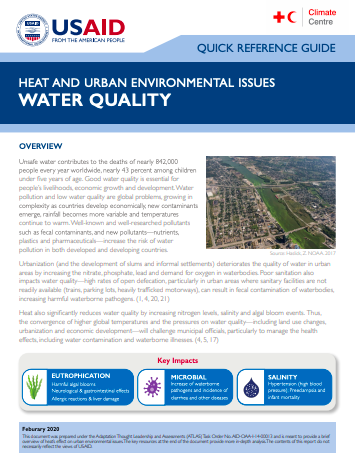Heat and Water Quality
Organization: USAID
Year: 2020

Unsafe water contributes to the deaths of nearly 842,000 people every year worldwide, nearly 43 percent of which are children under five years of age. Good water quality is essential for people’s quality of life, livelihoods, economic growth and development. Heat can significantly reduce water quality by increasing waterborne pathogens, salinity and algal bloom events. The convergence of higher global temperatures under a changing climate and the pressures on water quality—including land use changes, urbanization and economic development—will challenge municipal officials to manage the health effects, including water contamination and waterborne illnesses.
This quick guide from the USAID-funded Adaptation Thought Leadership and Assessments (ATLAS) project provides information on the impacts of heat on eutrophication and harmful algal blooms, microbial contamination and salinity, and in turn the impacts of poor water quality on human health. The guide also provides information populations and geographic locations most vulnerable to water quality related health risks, and provides actionable recommendations that city officials and donors can take to reduce the risk from heat and water contamination.

